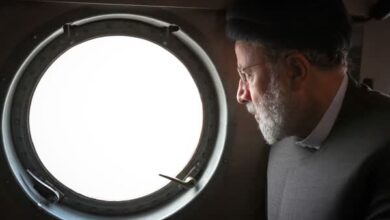
Ashraf AboArafe
Asir – 14 countries participating in the Qimam (tops) International Festival of Mountain Performing Arts transferred their traditional and popular arts to the villages and squares of the Asir region in successive carnival parades in seven ancient villages distributed in different locations between the city of Abha and Khamis Mushait and its suburbs. To provide daily live shows to visitors.
The People’s Republic of China participated in three arts, including the “dragon art”, which is the traditional performance symbolizing strength and dignity in China, and the “water sleeves” art, in which the performers use long sleeves to simulate the flow of water from the mountains, and they exert effort and rapid movements in presenting it. The Chinese, during their participation in the art of mountain performance, with its long and complex history, as a theatrical art that has its own specificity in songs and dances.
The Republic of South Korea presented its famous mountain arts accompanied by drumming, as well as the art of shamans, where the two colors mix with each other between playing drums in “Jindo”, an island located in the southwestern part of Korea, and a group of shamans performing color, and shares with China the art of “water sleeves”. The artist wears a long-sleeved robe called “Hansa” and a white cap “Kukal”.
The Republic of India participated in mountain arts from the state of “Manipur” in northeastern India, with the art of “Ras Lila” as one of the eight classical performance forms in India.
While the art of “Mountain Shalom” was distinguished by its harmonious and unique theatrical performance, the art of “Thang Ta” depicted an early stage of human development with a balanced performance.
Georgia presented a show describing life in the mountains, where performers imitate mountain animals with the art of “Civanti”, which shows the nature of the mountain people in Georgia, which is united by love, courage and toughness, while the plot of the “Champa” performance was the competition between men and women in horse racing in the mountains, forming Rhythmic and dynamic, the Georgian “Vaza” art conveys paintings that express daily life and adventure in the mountains with fast movements.
From Scotland, Highland Performance came as a competitive style designed in the Scottish Highlands in the 19th and 20th centuries, formalized as ballet and accompanied by Scottish village flutes, performers wear special shoes called “jellys”, and Scottish mountain performance art is a way to communicate with Like-minded people, live demonstration of excellent physique.
Switzerland, Uzbekistan and Montenegro participated in one art for each of them, as the Swiss performance from the “Elevander” mountains was improvised with movements that work on shape, rhythm and percussion as the oldest mountain performance in it, and the performance art of the Uzbek “Paison” mountains focused on the originality of the local style and the joint performance between the sexes in ancient traditions And a deep cultural heritage in history, and the Montenegro danced with the art of the Oro, the dance of the eagles, by forming a group of young men and women in a large circle to sing, then one of them folded to enter between them like an eagle performing and ecstatic at the moment.
The Arab mountain arts were not absent from the Qimam International Festival. Lebanon presented “Dabkeh” as the most famous performance color in the Levant. The performers lined up in a straight line that arched at the end and was led by an expert in performance who swayed, bended, jumped, and hit the ground with his feet, then moved and led the performers in wonderful harmony. Iraq was presented to the festival visitors. The art of “Jubi” is a Bedouin and village performance. It is performed by a group of men between five and ten people in the form of a round circle. They call to answer with the player “Yarghul” or Shababah, and the drum. In the middle of them is a singer with a beautiful voice who repeats songs and cheers for the attendees and performers at festivals, celebrations and weddings.
Villages vibrated with the youthful Yemeni art of “Al-Samra”, as it begins with “Al-Makhmos”, then the performance accelerates with its beautiful movements that are characterized by speed and lightness, supported by Zamil and poetry, as well as the youthful drum and flute, accompanied by a decorative rhythm of applause.
The art of “Al Rabuba” was attended by the Sultanate of Oman with its complex performance movements, where four male dancers line up against four women, and to the sound of singing and the rhythm of drums, the two rows move towards each other, and the drums perform the triple rhythm that characterizes Al Rabuba, which includes the Diaspora drum and the breaker drum. The rhythm is accompanied by applause and ululation. In the Omani flute, the performers organize themselves in two opposite rows carrying swords, and each row is led by a person, and his counterpart in the other row begins to perform with clapping and loud singing.
And from the Maghreb, the Kingdom of Morocco presented the musical art of “Ahidous”, which is spread in the central region of Morocco. The art of “Obeidat Al-Rama” was distinguished from the arts of the Moroccan heritage, by bringing together a group of singers and performers in traditional dress, repeating phrases from local poetry.
Sudan restored the art of its special performance in the villages of Asir, where a group of men jumped in a harmonious performance with a sword and a stick, moving their feet by raising their knees, adorned in national costume with grace and artistic performance smoothness.




